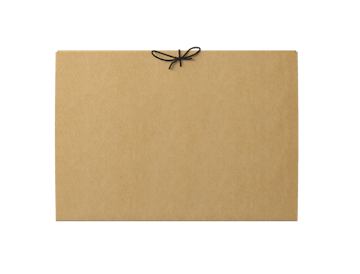
The Stock Investor’s Quick Start Bundle
In This Article
If you don’t know how to read a balance sheet, it can be confusing — a list of columns, rows, and numerical values. But if you know how to read a balance sheet, it can help you determine the health of a company, and influence your decision whether or not to buy their stock.
Whether you are a new investor unfamiliar with how to read a balance sheet, or an experienced investor looking for a refresher, we’ll break down its nuances so that you can use a balance sheet to your advantage.
Let’s get started!
What is a Balance Sheet?
A Balance Sheet, also referred to as a “Statement of Financial Position”, is a financial statement that shows a company’s assets, liabilities, and shareholders equity at a specified point in time.
Stock investors use it while making trading decisions. Being able to know how to read a Balance Sheet and all other financial statements can help any stock investor truly understand how healthy a particular company is.
As the name implies, a Balance Sheet must always balance.
This means that the total for assets must always equal the total for liabilities plus shareholders' equity.
Every publicly-traded company files a Balance Sheet. It can be found on the 10-K report in the Investor Relations section of their website.
A Balance Sheet is very straightforward:
- Assets will always be at the top of the page or on the left-hand side of the page
- Liabilities and shareholders equity will always be on the bottom of the page or the right-hand side of the page
Balance sheets show how much is in each account for assets, liabilities, and shareholders' equity at a specified point in time — typically at the end of a quarter or fiscal year.
Horizontal Analysis of a Balance Sheet
A balance sheet shows how particular accounts are moving. We can then use ratio analysis and competitor analysis to see whether the financial statements are getting healthier.
This is called horizontal analysis since we are analyzing the results moving from right to left.
Vertical Analysis of a Balance Sheet
Vertical analysis shows us how much each account makes up of total assets.
We can then see how this percentage changes each year. This is called vertical analysis because results are being analyzed by going from the top to the bottom of the Balance Sheet.
For example, let's say for company XYZ cash increased from 5% of total assets to 15% of total assets in a year.
The company can then use this information to make better decisions. They may want to take some of that cash and invest it in assets that generate a better return for their shareholders.
Once you know how to read a Balance Sheet, then you can understand these topics and how the accounts change over time.
Elements of a Balance Sheet
Section #1: Assets
The first section of a Balance Sheet is related to assets. An asset is anything that provides a future economic benefit to the company.
Assets are divided up into either short-term assets or long-term assets.
Short Term Assets
Short-term assets are those that provide economic benefits within a year. These are:
- cash
- short-term investments
- accounts receivable
- inventory
Long Term Assets
Long-term assets are those that provide economic benefits for more than a year. These are:
- long-term investments
- property
- plant
- equipment
Let’s break down the asset accounts that can be found on a Balance Sheet.
Assets are sorted by how liquid they are, so the most liquid (cash) will be found at the top, whereas the most illiquid (property, plant, and equipment) will be found at the bottom.
- Cash is the most liquid asset, so it will always be at the top. Cash can either be the amount of currency the company has on account, or it can take on the form of cash equivalents. Cash equivalents measure other highly liquid assets, such as Treasury bills.
- Short-term investments are investments that the company plans on selling within a year. These can take on the form of either debt securities or equity securities.
- Accounts receivable is the money that customers owe the company. Some customers can negotiate to pay for the goods or services in the future, and this account captures that total.
- Inventory is the value of the goods the company has in stock. Inventory is valued at the lesser of market value or its original cost. So even if the value of the assets increases, it doesn’t necessarily mean this account will also increase accordingly.
- Long-term investments are those investments the company plans on holding onto for longer than one year. These can also take the form of either debt securities or equity securities.
- Property, plant, and equipment are the most illiquid of the assets. This refers to buildings, land, furniture, and computers that will last for longer than one year. It will usually take a much longer time to sell these assets.
Section #2: Liabilities
Liabilities are the second of the three sections when wanting to understand how to read a Balance Sheet.
A liability is anything that provides a future economic cost to the company. Similar to assets, liabilities also are divided up into either short-term or long-term.
Short Term Liabilities
Short-term liabilities are those that are due within a year.
These are either accounts payable or debt payments due within a year (even if the maturity is longer than a year).
Long Term Liabilities
Long-term liabilities are those that are due past a year. This is going to usually be the portion of the debt that is due after one year.
Let’s look at each one of these accounts in detail.
Liability accounts are sorted by how soon they will be paid, with accounts payable at the top and long-term debt at the bottom of the liabilities section.
- Accounts payable is the opposite of accounts receivable. Accounts payable is when the company has received a good or service, but has not made the payment for it. They, too, can have terms in their contract that dictate when payment needs to be made.
- The current portion of long-term debt is the amount of the debt’s principal balance that is due within one year.
- The main long-term liability is the portion of the debt that is due after one year.
Section #3: Shareholders Equity
Shareholders equity has several other names. It can be referred to as:
- just “equity”
- owner’s equity
- net worth
- net assets
This is the final section of the Balance Sheet.
It represents how much the company is worth. If the company was going to be completely liquidated, and all of the assets paid off the liabilities, then whatever is left over is truly how much the company is worth. That is shareholders equity.
Shareholders equity has two main categories: common stock and retained earnings. We can look at these two in further detail.
- Common stock represents the value of the company’s shares. If there are 1 million shares and each share is priced at $10 on the market, then the common stock will be $10 million.
- Retained earnings are the sum of net incomes from the time the company started minus stock repurchases and dividends paid. A separate financial statement, the Statement of Shareholders Equity, captures how this account moves over time.
Ratio Analysis of a Balance Sheet
On their 10-K report, companies will report results for several years. This will allow you to calculate how specific ratios have been trending.
If ratios are moving in the right direction, this indicates the company’s financials are healthier and is more reason to get in or stay in. The opposite is true as well.
Let’s look at some of these ratios. You can then compare these to competitors to see where the company you're interested in investing in ranks.
Liquidity Ratios
Liquidity ratios measure how well the company can meet its short-term obligations.
The two ratios here are the current ratio and the quick ratio.
Current Ratio
The current ratio calculates the current assets divided by the current liabilities. What this ratio tells us is how well the company is able to pay for its current liabilities, using (hence the name) only the current assets.
The ideal number is above 1.0, but this will vary by industry.
In short, the company needs to have current assets that are at least as large as current liabilities.
Quick Ratio
The quick ratio is similar to the current ratio, but it removes inventory from current assets.
Inventory is the least liquid of all the current assets, so this ratio tests to see whether the company can meet its current liabilities without using inventory.
Solvency Ratios
Solvency ratios are the next category of Balance Sheet ratios. These ratios measure how well the company can pay all of its debt obligations, not just its short-term obligations.
In this section, we will go over the Debt to Asset and Net Worth ratios.
Debt to Asset
The Debt to Asset ratio tells us how much of our assets are comprised of debt.
If this number is too high, the company is over-leveraged.
Net Worth Ratio
The Net Worth ratio indicates how the percentage of assets that have been funded using equity.
While a high Net Worth ratio is preferable to a low one, there is no quick rule of thumb for these ratios.
It is best to compare these to competitors, as it is highly industry-specific.
Profitability Ratios
Profitability ratios measure how well the company is using its assets (Return on Assets) and equity (Return on equity) to generate a profit for its shareholders.
One caveat is the net income amount needs to be used, which can be found on the Income Statement.
The Return on Assets ratio divides net income by assets.
Return on Equity divides net income by equity.
We want these ratios to be positive, indicating a net profit, instead of a net loss.
But, again, the best way to measure this is by comparing it to competitors of the company.
The Bottom Line: Reading a Balance Sheet
A balance sheet has several advantages for stock investors.
You as a stock investor can take companies that you own or those who are on your watchlist and understand how they have been performing over the past few years.
You can use ratio analysis to see if the company’s financials are getting better or worse each year. If the company is improving, this is a sign of good things to come. If you see the ratios are going in the wrong direction, it may be better to wait and see what happens.
You can also use the Balance Sheet to do competitor analysis. If the ratios consistently outperform its competitors, then this company is an industry leader. If they are consistently below their competitors, they may be falling behind.
Understanding how to read a Balance Sheet and how to put this knowledge to good use as a stock investor will allow you to invest in companies that are financially healthy and at the top of their industry.
By knowing how to read a balance sheet, you can make better — and more profitable — investment decisions.






